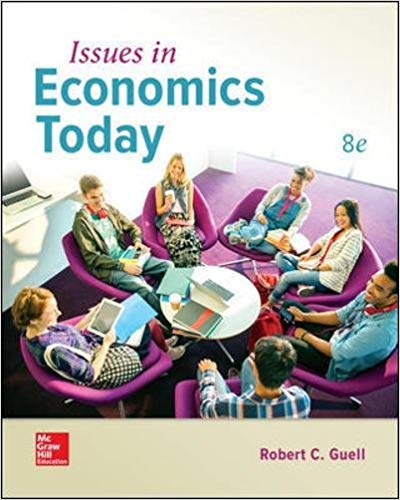Question
Question one. Summary and Thoughts about this article (please, without copying it from another article, resource or whatever, just your words). (It doesn't have to

Question one.
Summary and Thoughts about this article (please, without copying it from another article, resource or whatever, just your words). (It doesn't have to be long, at least 3 paragraphs).
Epidemics and Economics
New and resurgent infectious diseases can have far-reaching economic repercussions
David E. Bloom, Daniel Cadarette, and JP Sevilla
Infectious diseases and associated mortality have abated, but they remain a significant threat throughout the world. We continue to fight both old pathogens, such as the plague, that have troubled humanity for millennia and new pathogens, such as human immunodeficiency virus (HIV), that have mutated or spilled over from animal reservoirs.
Some infectious diseases, such as tuberculosis and malaria, are endemic to many areas, imposing substantial but steady burdens. Others, such as influenza, fluctuate in pervasiveness and intensity, wreaking havoc in developing and developed economies alike when an outbreak (a sharp increase in prevalence in a relatively limited area or population), an epidemic (a sharp increase covering a larger area or population), or a pandemic (an epidemic covering multiple countries or continents) occurs.
The health risks of outbreaks and epidemics?and the fear and panic that accompany them?map to various economic risks.
First, and perhaps most obviously, there are the costs to the health system, both public and private, of medical treatment of the infected and of outbreak control. A sizable outbreak can overwhelm the health system, limiting the capacity to deal with routine health issues and compounding the problem. Beyond shocks to the health sector, epidemics force both the ill and their caretakers to miss work or be less effective at their jobs, driving down and disrupting productivity. Fear of infection can result in social distancing or closed schools, enterprises, commercial establishments, transportation, and public services?all of which disrupt economic and other socially valuable activity.
Concern over the spread of even a relatively contained outbreak can lead to decreased trade. For example, a ban imposed by the European Union on exports of British beef lasted 10 years following identification of a mad cow disease outbreak in the United Kingdom, despite relatively low transmission to humans. Travel and tourism to regions affected by outbreaks are also likely to decline. Some long-running epidemics, such as HIV and malaria, deter foreign direct investment as well.
The economic risks of epidemics are not trivial. Victoria Fan, Dean Jamison, and Lawrence Summers recently estimated the expected yearly cost of pandemic influenza at roughly $500 billion (0.6 percent of global income), including both lost income and the intrinsic cost of elevated mortality. Even when the health impact of an outbreak is relatively limited, its economic consequences can quickly become magnified. Liberia, for example, saw GDP growth decline 8 percentage points from 2013 to 2014 during the recent Ebola outbreak in west Africa, even as the country's overall death rate fell over the same period.
The consequences of outbreaks and epidemics are not distributed equally throughout the economy. Some sectors may even benefit financially, while others will suffer disproportionately. Pharmaceutical companies that produce vaccines, antibiotics, or other products needed for outbreak response are potential beneficiaries. Health and life insurance companies are likely to bear heavy costs, at least in the short term, as are livestock producers in the event of an outbreak linked to animals. Vulnerable populations, particularly the poor, are likely to suffer disproportionately, as they may have less access to health care and lower savings to protect against financial catastrophe.
Economic policymakers are accustomed to managing various forms of risk, such as trade imbalances, exchange rate movements, and changes in market interest rates. There are also risks that are not strictly economic in origin. Armed conflict represents one such example; natural disasters are another. We can think about the economic disruption caused by outbreaks and epidemics along these same lines. As with other forms of risk, the economic risk of health shocks can be managed with policies that reduce their likelihood and that position countries to respond swiftly when they do occur.
A daunting set of threats
Several factors complicate the management of epidemic risk. Diseases can be transmitted rapidly, both within and across countries, which means that timely responses to initial outbreaks are essential. In addition to being exacerbated by globalization, epidemic potential is elevated by the twin phenomena of climate change and urbanization. Climate change is expanding the habitats of various common disease vectors, such as the Aedes aegypti mosquito, which can spread dengue, chikungunya, Zika, and yellow fever. Urbanization means more humans live in close quarters, amplifying the transmissibility of contagious disease. In rapidly urbanizing areas, the growth of slums forces more people to live in conditions with substandard sanitation and poor access to clean water, compounding the problem.
Perhaps the greatest challenge is the formidable array of possible causes of epidemics, including pathogens that are currently unknown. In December 2015 the World Health Organization (WHO) published a list of epidemic-potential disease priorities requiring urgent research and development (R&D) attention. That list has since been updated twice, most recently in February 2018 (see table).

Step by Step Solution
There are 3 Steps involved in it
Step: 1

Get Instant Access to Expert-Tailored Solutions
See step-by-step solutions with expert insights and AI powered tools for academic success
Step: 2

Step: 3

Ace Your Homework with AI
Get the answers you need in no time with our AI-driven, step-by-step assistance
Get Started


